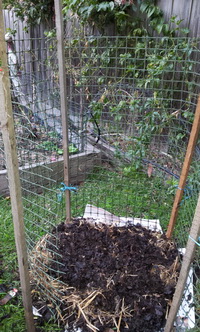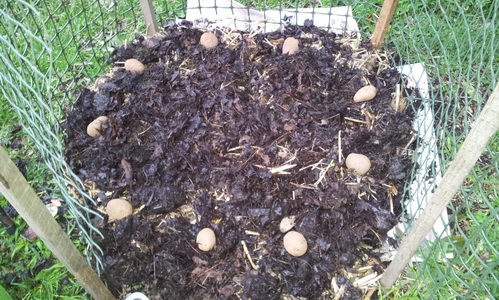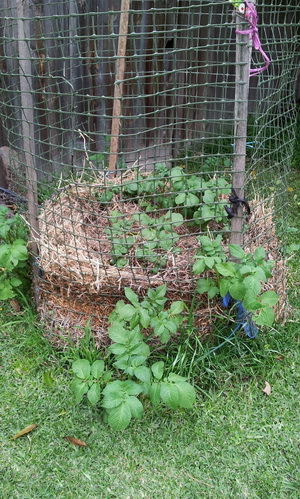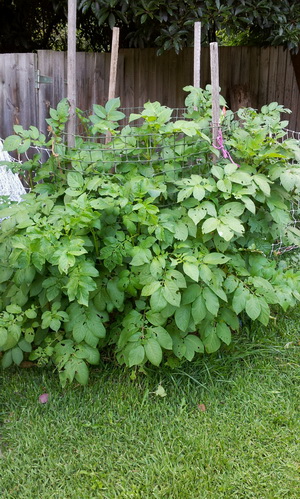Towering Spuds - Growing Potatoes Vertically
This method is great for gardens short on space, as long as there is access to sunshine for at least a few hours a day. You get a decent crop growing the potatoes vertically, rather than in-ground. The idea is that you are creating more surface area, in a small space, for the potato plants to get the sun’s energy. The leafy stems will poke through the sides of the mesh.
You will need some support for the tower. I use rigid plastic mesh, about 90cm wide, rolled into a cylindrical shape and then kept upright with wooden stakes. You could also use chicken wire mesh, or whatever is handy to keep the potatoes and soil contained, vertically.
Place some newspaper over the ground where you want the tower to stand. Erect the tower using the mesh and the stakes, leaving one side open so you can access the inside to add the tower contents. Line the inside of the tower with loose straw and place some also on the newspaper. Add soil or compost to a 30cm depth, mixing in several handfuls of a pelletised organic fertiliser with the compost. Then put your potatoes around the edge, about 20cm apart, with the potato eyes or sprouts facing outwards. Water well.
Cover with about 30cm of more soil or compost, as well as the organic fertiliser Place more potatoes on the soil as before, around the edge, eyes facing outwards. Repeat this layering for another 1 or 2 layers, depending on how many potatoes you have, or how much soil/compost you have available. Water well at each layer.
At the top, create a shallow depression so that when you water, the water is directed inwards to help feed the developing roots. Top with more straw as a mulch. You could put another potato to grow at the top in the middle, or alternatively, grow other shallow rooted vegetables at the top of your tower. The potatoes will sprout and the leafy parts will grow outside of the tower, leaving the tubers to develop in the tower.
Keep watering regularly and a regular feed with an organic liquid fertiliser will also help the tuber development.
After a few months, you'll find that small flowers start to develop on the green leafy matter poking out of the tower. It's at this point that you can start 'bandicooting' or gently search under the mulch, for new potatoes. These will have very thin skins and are best eaten soon after harvesting as they don't store too well.
Leave the rest of the potatoes to continue to develop until all of the foliage has died off.
Once this happens, don't water any more and open up your tower, digging around gently to expose the potatoes.
Enjoy!
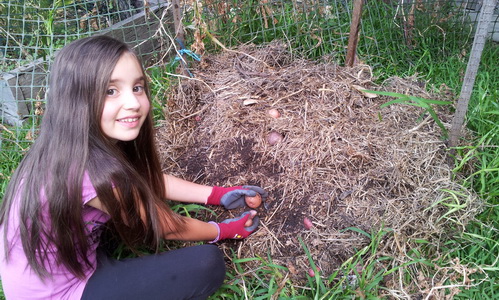
Once the greenery has died back, in several months, it will be time to pull apart your tower and dig for treasure!
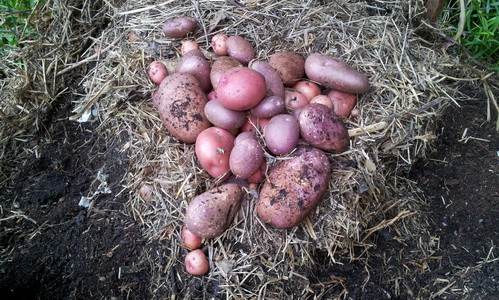
Enjoy your freshly dug potatoes!
